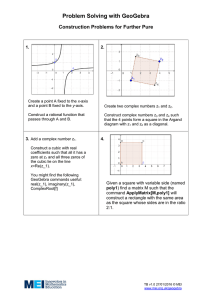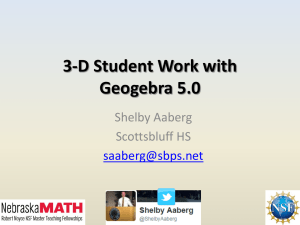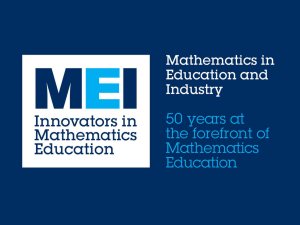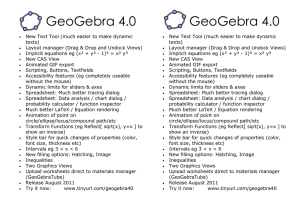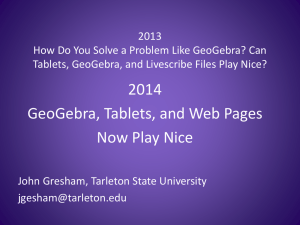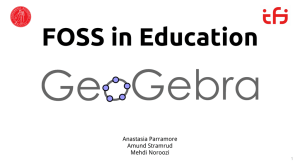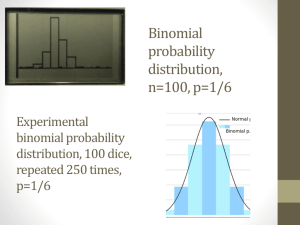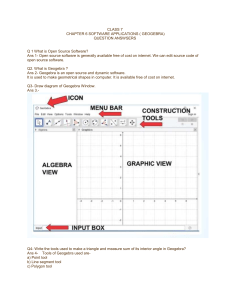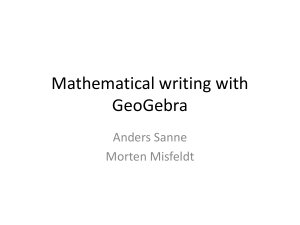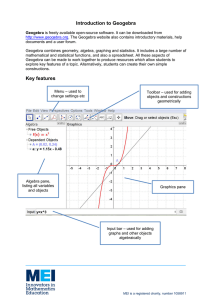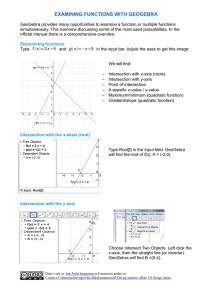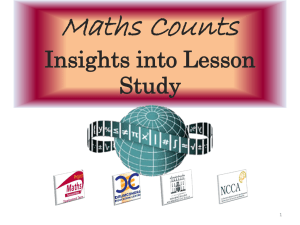TPCK - ggbconference2011
advertisement
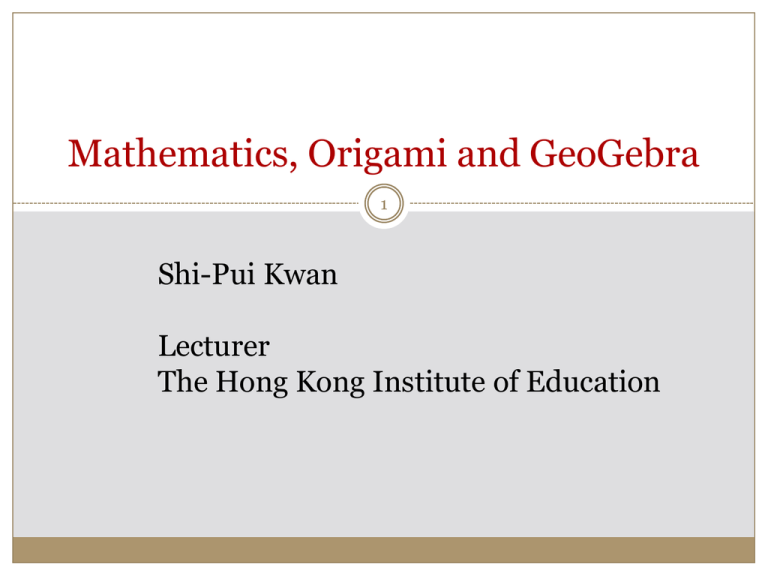
Mathematics, Origami and GeoGebra 1 Shi-Pui Kwan Lecturer The Hong Kong Institute of Education A model of teaching 2 TPCK TPCK 3 Content (Mathematical) Knowledge Pedagogical Knowledge Technological Knowledge hands-on manipulative virtual manipulative GeoGebra 4 Geometry + Algebra GeoGebraSpreadsheet 5 GeoGebra3D 6 Problem 1: Haga’s theorem 7 The lower left hand corner C is folded upward to touch a point F on DE. If DF=1/n of DE, what fraction Is EN of DE? (n = 2, 3, ……, 9) Problem 2: mouhefanggai 8 A mouhefanggai is formed by cross sections which are circumbscribing squares of the circular cut sessions of a sphere. How does it look like? Without knowing the volume formula for the sphere, how to determine the volume of the mouhefanggai? my teaching notes – Haga’s theorem 9 origami simulation by GeoGebra some construction techniques ‘error free’ measurements guided discovery through measuring, tabulating, conjecturing and proving Record to Spreadsheet select ‘value’ in algebra view move slider ‘ denominator ’ to obtain data observation: EF increases with DF computation of fractional values problem extension my teaching notes – mouhefanggai 10 a solid formed from the circumscribing squares of the circular cut sections of a sphere visualization of the mouhefanggai questions for discussion the ancient Chinese way in determining its volume 1/8 mouhefanggai and its complementary part inside the circumscribing cube(r3) introduction and visualization of Yangma (a square pyramid) problem extension math proof outline: Haga’s theorem 11 math proof outline: mouhefanggai (mhfg) 12 ScreenCasts 13 Learning in different styles 14 The cursor jumping from one spot to another during the process somehow distracts me so that I cannot concentrate on the picture and cannot easily exert my own imagination. I prefer to stare at a static picture and think about it, better yet, draw my own picture if that is possible. - Prof. Siu M.K. Student’s drawings 15 GeoGebra 16 is a freeware is ‘error free’ (in compare with measurement) can generate lots of data (time saving) can help students in visualization (for spatial sense development) is a useful tool in identifying the variants and the invariants (particularly in learning geometry) is effective for problem extension provides insights in making conjectures (inductive thinking) GeoGebra 17 files are more long lasting than origami models construction is itself a learning process (more suitable for secondary students) is a new learning/teaching tool which provides students/teachers with various modes of lesson delivery demonstration/illustration interaction/exploration project learning …… Thank You! 18 Thanks to the teachers & students involved in the try-outs! Thanks to the GeoGebra developers! Thank You!
